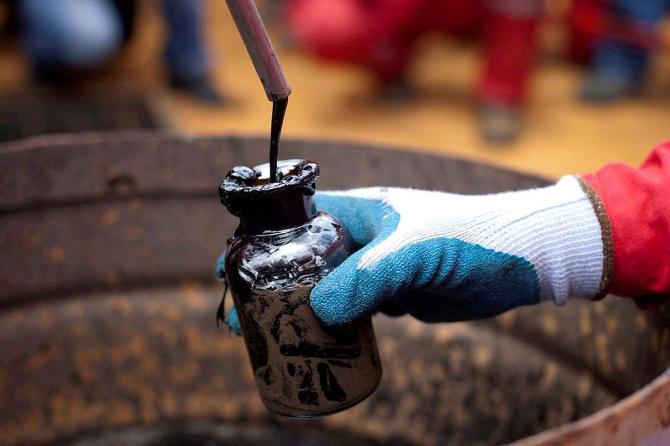A few years ago, when top officials of Indian state-run refiners went to Dubai to negotiate a crude oil supply contract, a senior official from state-owned Saudi Aramco told them, “We can negotiate on anything, but I am the last man standing for you.

"Nobody can offer the range of crudes we do with certainty,” an official who was part of the negotiating team recalls.
Perhaps that explains why Saudi Arabia is less concerned about losing its place as India’s premier oil supplier to an upstart like Russia, which emerged from nowhere to become India’s biggest crude oil supplier in September and October.
Just six months after invading Ukraine, Russia has displaced traditional West Asian suppliers in Iraq and UAE, and newer suppliers such as the US.
Russia’s market share has expanded exponentially.
As of November 20, Russia supplied 790,000 barrels per day of mainly Urals grade, a 19 per cent share of India’s oil market, compared to 680,000 barrels a day of Saudi shipments during the period, a 16 per cent share, according to data from Vortexa, a London-based commodity intelligence institution.
In October, Russia’s share was nearly 22 per cent, 5 percentage points more than Saudi Arabia, the data show.
Vortexa collects data from tracking ship movements, and the numbers are dynamic and keep changing.
More revealing is data from Indian customs, which shows an eight-fold increase in Russia’s share of the Indian oil market in the April-September period from a year earlier.
Saudi Arabia’s share of the Indian oil market was 14 percentage points over Russia in the pre-war period of April-September 2021, whittling down to just 1 per cent in the first half of this fiscal.
An obvious reason is price, and the value that Indian refiners derive from discounted Russian Ural grades, said R Ramachandran, former refinery head of BPCL.
The discounts negate higher freight and insurance costs, making the crude viable for Indian refineries, he added.
Delivered Russian crude, which accounted for only 2 per cent of Indian oil imports in the first half of FY22, cost as much as Saudi grades, and was around $40 a tonne pricier than Iraqi oil.
Russian oil became cheaper than Saudi grades in the post-war April-September 2022 by 10 per cent, at $746 a tonne — in price terms the difference is around $12 a barrel, in an industry where refiners find value in just 10 cents a barrel.
Russia’s price differential with Iraq also narrowed to only $11 a tonne.
Russia’s medium sour Urals, similar to some West Asian grades, such as the Arab medium, is suited to Indian refiners when available at a discount on a delivered basis, but the availability of the grade was an issue in the past since Europe and China consumed most of the Russian oil, Ramachandran said.
Discounts by Russia have not gone unnoticed.
In fact, OPEC+, led by Saudi Arabia and Russia, dictates oil prices to a certain extent.
But Riyadh has refused to accommodate New Delhi’s interests by offering lower rates, unlike Iraq now or Iran in the past.
In fact, Saudi official selling prices (OSPs) have been at near records since the war began.
“Losing and winning market share from month to month cannot be seen as a metric that the Saudis look at to determine OSPs,” said Tilak Doshi, formerly a senior executive in Saudi Aramco and Riyadh-based think tank King Abdullah Petroleum Studies and Research Center.
“When Saudis set OSPs for Asia, it will not look at only one country in Asia but at crude refining values of Dubai, Oman, Murban and other similar grades that are regularly sold into Asia,” he explained.
Iraq and Iran have offered discounts to boost Indian market share.
Iran had offered either free or discounted freight, and delivered cargoes at its own risk before US sanctions plugged Tehran’s taps.
Iran’s supplies to India more than doubled in 2016 and 2017 calendar years from just 11 million tonnes in 2015, becoming India’s third biggest oil supplier.
Iraq has offered better rates on grades such as Basrah Light, a crude most suited to state refiners for its lower sulphur and higher diesel yields, after Russia’s inroads, said an official from a state refiner.
The issue, of course, is how long India’s romance with Russian oil will last. For one, there’s a question of what will happen when a US-led price cap kicks in from early December, denying shipping and insurance to those violating it.
“Russian oil is attractive as long as they continue to offer discounts,” said Narendra Taneja, a Delhi-based oil industry expert, and added, “If sanctions are tightened, things can get difficult.”
Most of India’s oil comes on western carriers and most insurers are from the West.
For another, when things improve, Russia may go back to charging normal rates.
Finally, Russia’s capability to maintain oil production next year at pre-war rates is also doubtful given the exit of oil majors from the country, an industry official said.
Perhaps, that’s why the Saudis continue to charge premiums for Asian supplies.
During Dharmendra Pradhan’s tenure as oil minister, India accused Saudi Arabia of charging a premium for Asia over western customers.
There were brief attempts to curtail Saudi oil purchases, and diversify crude sources.
Eventually, though, India was forced to boost Saudi oil imports for lack of viable alternatives, and stop making statements, the official said.
But just as Saudi Arabia is the supplier of last resort for oil given its humongous reserves, low production cost and political stability, India will be “the last man standing” for oil demand, despite New Delhi’s aggressive attempts to electrify transport.
India’s combined import bill for fossil fuels is slated to treble over the next two decades, with oil by far the largest component, with net dependence on imported oil projected to rise above 90 per cent by 2040 from 87 per cent this fiscal, the International Energy Agency said.
Given the importance of India’s oil market in the long term, Aramco and UAE’s ADNOC had proposed to build India’s biggest refinery in Maharashtra, which would have given them a captive market for about 600,000 barrels a day for crude, around 14 per cent of India’s October oil demand.
But local political controversies have delayed the project indefinitely.










